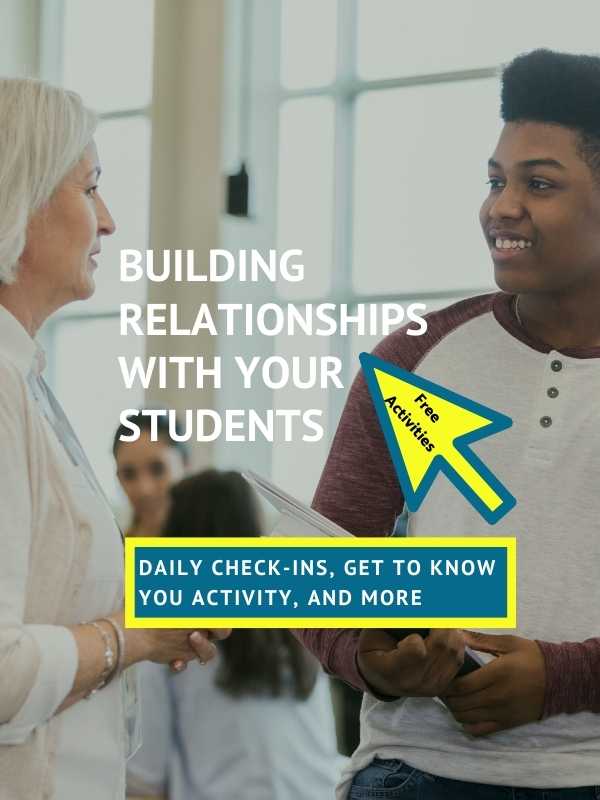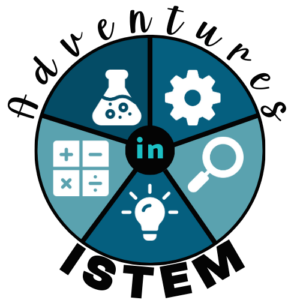Being a new teacher can be overwhelming. During your first few years, you are trying to figure out your teaching style and working on your classroom management while also trying to figure out how to teach all of the standards while building relationships with your students. Here are some tips to help you during your first few years.
New Teacher Tip #1: Find your tribe
Create a support system that you can rely on as a teacher. These people should be a safe place for you to bounce ideas off, get support, get inspiration, and find new tips and ideas. They can be teachers at your school, within your department, within your credentialing program, or part of online groups. They don’t necessarily have to teach the same subject, although you should have a few that do. The most important thing is that you feel that you can share ideas, get support, and offer ideas and support to them as well. I belong to a few tribes. I have the teachers in my department whom I can bounce ideas off of, ask for support and collaborate with. I also have a few Facebook groups that I belong to that specialize in my subject or teaching strategies that I incorporate in my classroom where I can offer support and ask for it.
New Teacher Tip #2: Create a routine
Routines are great to help your class run smoothly and to help students know what to expect. It would help if you had a daily routine for how you will start your class, end your class, and transition from one way to another.
Decide on how you want the students to enter your class. What should they be doing during the first few minutes? Will they need to write down the homework, and daily objective, answer a question, or check their work with the posted answers? What will you be doing?
Then, decide on how you want to close out your class? Will you need time for students to put things away? Will there be a ticket-out-the-door or formative assessment to see where the students are at in their learning journey? Do they need to write down the homework?
Finally, decide on one or two strategies you will use to help the students transition from one activity to another. It is important to break up the day into 10-20 minute segments. Even if the whole day is going to be spent doing a project or lab, there should be a check-in portion every 10-20 minutes. Students need to reflect on what they learned, write down, and/or share their reflections with other students.
Another routine you will want to think about is what your homework policy will be. How will you pass out and collect work? Will you have specific days for when you do things? For example, will there be a quiz every Friday? Will you pass out work on Monday and collect on Friday? My coworker puts aside 10 minutes every Friday for students to give “Science in the News” presentations where they read about science topics in the news and then share a summary with the class.

New Teacher Tip #3: Build meaningful relationships with your students
I have found that the best way to reduce behavior problems in my classroom is by building relationships with my students. This process takes a while, but it is worth the effort. It’s not enough to tell the students you care about them; they need to feel they are cared for. They need to feel connected to you, your class, and your school. Students who feel more connected are more likely to perform well and participate.
Start by greeting them at the door every day. I used to shake my students’ hands; now, I play music for them as they enter. I also had one student with which I played rock, paper, and scissors every day. In the beginning, have them fill out a get to know you form. Ask them about their hobbies, favorite sports, favorite shows, and what they like to do outside school. Then learn the information and use it when you have conversations with them. I also like to ask them their preferred name and pronouns, and I tell the students my preferred name I want them to call me by and my pronouns. Asking their preferred name and pronoun can be a huge deal for those of the LGBTQ+ community to help them know that your classroom is a safe place for them.
Another less obvious way to build relationships is to teach students life skills beyond their subject. I use every Wednesday to teach mindfulness and the habits of success. This shows the students that I care about them beyond what they can do academically. That I want to support them in all aspects of their life. Helping students with their social and emotional learning, giving them a safe place to share their thoughts and emotions, and acknowledging that what they are feeling is normal is an important ways for them to feel connected.
Finally, share your human side with the students. When you make a mistake, own it. Let them know that even adults make mistakes. If a lesson completely flops, talk about it with your students and laugh about it. Ask them for input on how it could have gone better. Share stories about yourself; you don’t need to go into too much detail that is relatable. I teach middle school, so I talk about how middle school was hard for me. I talk about being bullied daily by a bunch of girls and not knowing what I did to have them be so mean to me. I talk about trying to fit in and feeling like an outcast the whole time. These are the type of stories they can relate to because although many things have changed in schools over the years and decades, many things are still the same.
New Teacher Tip #4: Figure out your teaching style and classroom management
Hopefully, you will have had the opportunity to observe many different teachers before giving your class. You might have noticed that each teacher has their teaching style and classroom management. Finding your teaching style and classroom management takes time, so don’t get discouraged if you’re still trying to figure out what works for you in your third year.
You will get lots of advice from other teachers about how to do classroom management and how to teach. They will tell you not to do certain things and explain how to handle a certain set of students. Listen to the advice, but then choose what you think will work best for you. My fellow science teachers at my school have great classroom management. However, if I tried to run my class like them, it wouldn’t work. My personality and teaching style is different. My one coworker has a very calm and quiet voice, whereas I am more high energy, and my voice carries. How we manage our classes is very different but works for us.
When it comes to classroom rules and expectations, get the students involved. If you are teachings students above the 4th grade, you probably don’t need to post the class or school rules or even go over them. They have been in school long enough to know the basic school and class rules. They might not always follow them, but they know what they are. I always have them work in groups to put the typical class rules on a poster, and then the groups share. Most of the posters all have the same rules. At that point, I state that they haven’t changed and that I’m glad they already know what they are, and we move on. When it comes to expectations, have the groups create expectations for a positive learning environment. What it looks like, sounds like, and feels like. What the students are doing and what the teacher is doing. We then narrowed it down and voted on the class expectations. I then have the students sign it just like they would a contract. Another way to get them involved is to have them come up with general consequences for when the expectations are not met. Have the students give input and then adjust to what you are willing to follow through with. Getting the students involved helps them feel more connected to your class and cuts down on certain unwanted behaviors.
Finally, when it comes to classroom behaviors, be flexible and fair. Try and get to the underlining cause of the behavior. If a student is not turning in work, perhaps they have no place to do their work at home after school, or they might have a job that they need to help feed their younger siblings, or they are taking care of their younger siblings and don’t have time for their work. If a student is always acting out, this could be a cry for attention. I had a student whose behavior in class worsened, and we discovered that the only time they got attention at home was when the parent had to come to school; otherwise, the parent didn’t talk to them. It was a cry for attention to the parent, and in the eyes of the child, the negative attention was at least attention.
New Teacher Tip #5: Focus on only one or two strategies at a time
During your first few years of teaching and throughout your teaching carrier, you will be given many “research-based” strategies designed to help you be a better teacher and meet the needs of your students. In my district, it feels like every year, they have a new strategy they want us to learn, implement, and focus on. Trying to do new or multiple strategies every year is overwhelming and can quickly lead to burnout. Implementing a teaching strategy effectively takes time. Time for you to learn how to implement it, time for you to practice implementing it, and time to tweak and refine it. I would say choose only one or two strategies that you think would be the best for you and your students. Then spend your first two or three years implementing and refining the strategy.
Some strategies can be implemented together at the same time. For example, you could implement the 5E model of instruction while also implementing science stations, flipped classrooms, or menu choices. You could also implement the gradual release of responsibility while implementing constructing meaning, direct instruction, or interactive notebooks.
Focusing on one or two strategies doesn’t mean you must leave the others out and not use them at all. It just means that the focus will be on the main strategy, and the other strategies could just be used to enhance or try out. You could have your focus be on the 5E instructional model. While that is the focus, you could practice marking the text during the explain phase or doing science stations during the explore phase. The focus would be on ensuring that each part of the 5E model is done with the purpose of what it was designed for, but you are adding other strategies that might enhance it.
Watch the video about this below and stay to the end for a 6th bonus tip.






